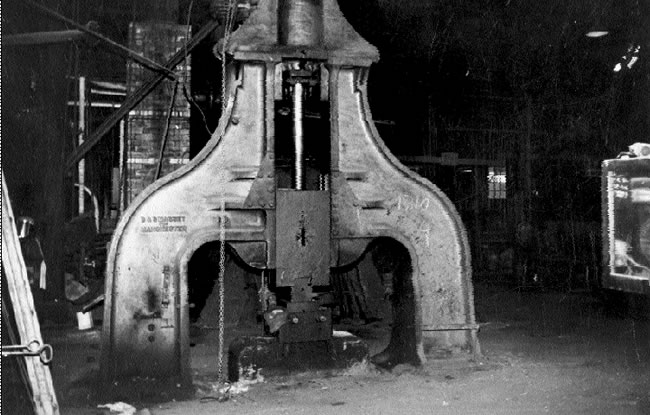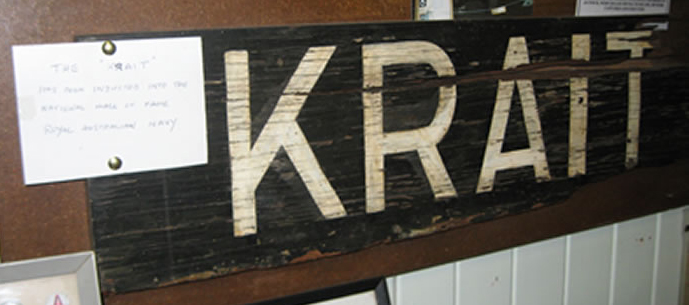Case study one - What is Provenance?
'The place of origin, derivation, or earliest known history, esp. of a work of art, manuscript etc. A record of the ultimate derivation and passage of an item through its various owners.' - Oxford English Dictionary
Or – more simply, the life history of an object.
Knowing the history of an object allows us to make a precise assessment. Provenance means the chain of ownership and context of use of an object. Provenance is central to establishing historic and scientific significance.
An object may be significant because its provenance - a documented history of its existence, ownership and use - gives it a context in society or in the natural world, or the personal world of a known individual.
Provenance has very particular meanings in some collection areas. For example:
- Art museums and collectors prefer a complete line of ownership of a work of art, from the time it leaves the artist's studio to its latest appearance in a sales room. Artworks of doubtful or incomplete provenance have less value than those with a clear sequence of owners.
- Archaeological material should be provenanced to a particular site and to an exact stratum and location within that site.
There are some further interpretations of the word ‘provenance’, depending upon which professional area or institution is using it.
![]() Read the provenance of each of the objects below.
Read the provenance of each of the objects below.
The Krait
This item resides in the Man From Snowy River Museum - a long way from the sea!
(Note: Clicking on the image will take you to the Australian War Memorial Encyclopedia information regarding the Krait.)
Click here to read the provenance of the ship sign, the Krait. (pdf, 15kb)
This reading highlights the importance of dealing appropriately with the donor's sensitivities and the question of 'encumbrances'. Occasionally people donate items with conditions attached, for example, a request that the item must be on permanent display or must have certain information attached. This can present difficulties for a museum. What might they be? Discuss this with your colleagues and remember that significance may increase or diminish over time.
--------------------------------------
Steam Hammer, 1912
Read the provenance, embedded in the Statement of significance below, of the steam hammer.

Steam hammer, 1912
Reproduced courtesy of the Queen Victoria Museum and Art Gallery, Launceston, Tasmania
Statement of significance: This large Nasmyth steam hammer was imported from Manchester, in Great Britain, in 1912. It was used in the blacksmith’s shop at the Launceston Railway Workshops where Tasmania’s rolling stock was manufactured and maintained between 1868 and 1993. The steam hammer was sold for scrap in 1982 and subsequently purchased by Launceston’s Queen Victoria Museum and Art Gallery as an example of Tasmania’s industrial heritage. The museum has since moved its history and art collections into the workshop buildings, and manages the entire precinct as a heritage site.
The steam hammer is of historic significance as the largest of four in the Launceston Railway Workshops, the centre of Tasmanian heavy industry for 70 years. It is a rare Australian example of an arched steam hammer, and the only Tasmanian example. Although sold for scrap at the end of its working life, the steam hammer’s significance is enhanced by its return to its original context in the Blacksmith Shop.
Taken from: (significance) A GUIDE TO ASSESSING THE SIGNIFICANCE OF CULTURAL HERITAGE OBJECTS AND COLLECTIONS Heritage Collections Council 2001, P 38
------------------------------
Further interpretations of the word 'provenance'
- If the object is a work of art, its documented passage from the artist’s studio through a chain of collectors to the latest owner is crucial to its value. Unprovenanced works of art are worth a fraction of those with a soundly documented provenance.
- If the object is a document in an archive, ‘respect for provenance means keeping the integrity of the records of a person or an organisation by not mingling records from one person or organisation with those from another.’[i][i]
- If the object is from an archaeological site, its location within the site – its provenance – is crucial to understanding its significance, including its place in a sequence of dates. This is why looting sites – taking objects from their context – is such a serious business: ‘individual items lose their cultural and historical value if assessed outside the matrix from which they emerged’.[ii][ii] International conventions guard against the removal and sale of illicitly obtained objects such as antiquities for this reason. A highly publicised battle to combat looting and to obtain restitution of looted or illicitly obtained objects rages still across the world’s courtrooms.
- And if an object is in a museum, its previous history of ownership and use is critical to understanding why it is significant, and will provide the stories that museums tell to bring the past to life. That is why we encourage all donors to museum collections to give us as much information as they can about the object, who used it, and how. Knowing the provenance of an object can help us to make decisions about its significance, how to display it, and how to care for it so that its distinctive characteristics are preserved.
